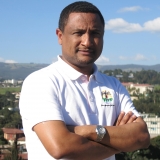The objectives of this research project are to analyse the effects of socioeconomic and institutional factors on land use change in Ethiopia and to assess and understand whether climate change has any role in the land use and land over changes in the country. The outcome of this research project is to reduce deforestation by improving land use planning in Ethiopia.
Land use and land cover (LULC) change is important for social, economic and regional development and environmental change. For the case of Ethiopia, commercial agriculture, timber extraction, fuel wood collection and charcoal production are said to be main direct drivers of deforestation while others such as population growth, demand for commodities, economic growth and weak governance are considered to be among indirect drivers of deforestation. LULC change is also one of the major challenges which strongly impacts the process of agricultural development and implementation of the country’s main strategy such as the climate resilient green economy strategy (CRGE) and the growth and transformation plan (GTP). Available empirical studies in Ethiopia have focused on the biophysical aspect and there is no systematic economic analysis of the dynamics and drivers of land use and land cover change. Understanding the factors that influence LULC change is important to design proper policies and land use planning.
This research project aims to support the country’s effort in implementing the climate resilient green economy strategy (CRGE) and promote environmental sustainability through enhancing informed and evidence based policy making. Specifically, the objectives of the research project are to:
- Analyse the effects of socioeconomic and institutional factors on land use change in the country;
- Assess and understand whether climate change has any role in the land use and land cover changes in the country.
This research project aims to address these objectives using secondary data sources collected for the period of 1993 to 2013. Land cover data will be constructed either by downscaling satellite imageries and land use classifications obtained from various sources, or by calibrating the satellite data with the help of actual field observation and/or aerial photographs. The next step is to split or distribute the national data among the districts using Woreda/district-level shape files. A panel data set with data on Woreda level, covering the last two to three decades, will be created.
